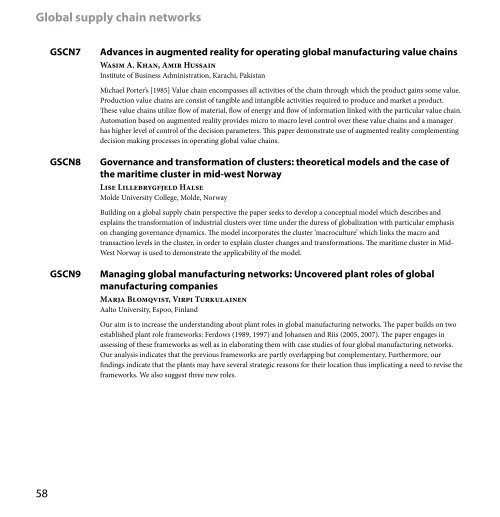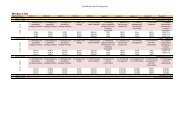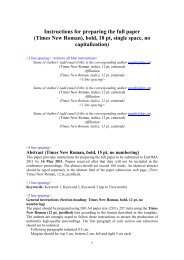Download the book of abstracts - EurOMA 2011
Download the book of abstracts - EurOMA 2011
Download the book of abstracts - EurOMA 2011
Create successful ePaper yourself
Turn your PDF publications into a flip-book with our unique Google optimized e-Paper software.
Global supply chain networks<br />
58<br />
GSCN7 Advances in augmented reality for operating global manufacturing value chains<br />
Wasim A. Khan, Amir Hussain<br />
Institute <strong>of</strong> Business Administration, Karachi, Pakistan<br />
Michael Porter’s [1985] Value chain encompasses all activities <strong>of</strong> <strong>the</strong> chain through which <strong>the</strong> product gains some value.<br />
Production value chains are consist <strong>of</strong> tangible and intangible activities required to produce and market a product.<br />
These value chains utilize flow <strong>of</strong> material, flow <strong>of</strong> energy and flow <strong>of</strong> information linked with <strong>the</strong> particular value chain.<br />
Automation based on augmented reality provides micro to macro level control over <strong>the</strong>se value chains and a manager<br />
has higher level <strong>of</strong> control <strong>of</strong> <strong>the</strong> decision parameters. This paper demonstrate use <strong>of</strong> augmented reality complementing<br />
decision making processes in operating global value chains.<br />
GSCN8 Governance and transformation <strong>of</strong> clusters: <strong>the</strong>oretical models and <strong>the</strong> case <strong>of</strong><br />
<strong>the</strong> maritime cluster in mid-west Norway<br />
Lise Lillebrygfjeld Halse<br />
Molde University College, Molde, Norway<br />
Building on a global supply chain perspective <strong>the</strong> paper seeks to develop a conceptual model which describes and<br />
explains <strong>the</strong> transformation <strong>of</strong> industrial clusters over time under <strong>the</strong> duress <strong>of</strong> globalization with particular emphasis<br />
on changing governance dynamics. The model incorporates <strong>the</strong> cluster ‘macroculture’ which links <strong>the</strong> macro and<br />
transaction levels in <strong>the</strong> cluster, in order to explain cluster changes and transformations. The maritime cluster in Mid-<br />
West Norway is used to demonstrate <strong>the</strong> applicability <strong>of</strong> <strong>the</strong> model.<br />
GSCN9 Managing global manufacturing networks: Uncovered plant roles <strong>of</strong> global<br />
manufacturing companies<br />
Marja Blomqvist, Virpi Turkulainen<br />
Aalto University, Espoo, Finland<br />
Our aim is to increase <strong>the</strong> understanding about plant roles in global manufacturing networks. The paper builds on two<br />
established plant role frameworks: Ferdows (1989, 1997) and Johansen and Riis (2005, 2007). The paper engages in<br />
assessing <strong>of</strong> <strong>the</strong>se frameworks as well as in elaborating <strong>the</strong>m with case studies <strong>of</strong> four global manufacturing networks.<br />
Our analysis indicates that <strong>the</strong> previous frameworks are partly overlapping but complementary. Fur<strong>the</strong>rmore, our<br />
findings indicate that <strong>the</strong> plants may have several strategic reasons for <strong>the</strong>ir location thus implicating a need to revise <strong>the</strong><br />
frameworks. We also suggest three new roles.





